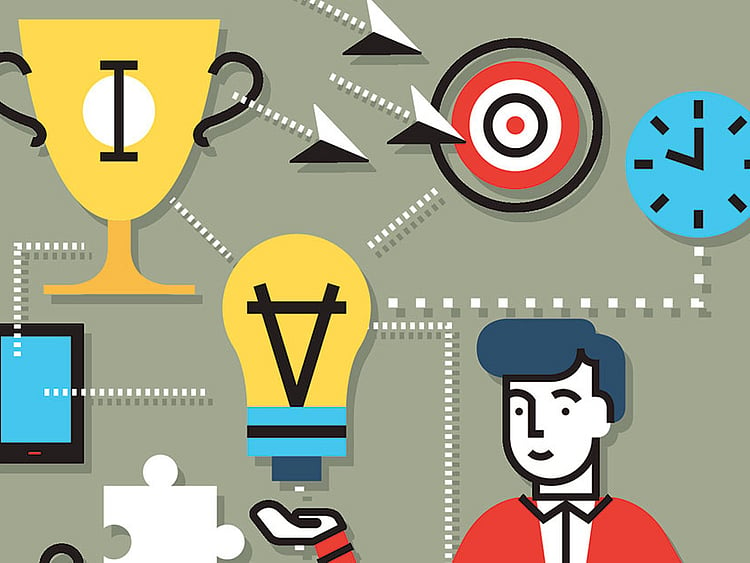Performance measurement, performance management and employee engagement all have one thing in common, they are ‘Game Elements’. Unfortunately, most organisations do not take the initiative to gamify them enough to motivate high performance.
Today, much of our lives are gamified — Facebook, Instagram, and Snapchat (#1 choice of the iGen) apply gamified performance measurement with how many likes, views, shares and comments. Over 2.8 billion people are drawn to them every day, often multiple times a day. While these are simple gamified processes, they have nurtured user engagement. But to what end?
So how does gamification support productivity? To fully grasp the potential of work gamification, we need to know the game elements.
Objective
Since most organisations have objectives, this seems easy. But wait, there’s more: the real question is how fast (with enough challenge) can the first objectives be met? There is a delicate balance between emotional gratification, the level of achievement, and speed of achievement that supports engagement.
If the objective is too easy, the emotional gratification is minimised. If it is too hard, slower speed of achievement reduces the motivation to even start and thus inducing procrastination. And motivation reduces when it is not easy to see the extent of progress towards the bigger objective.
Then there is the scalability — the first objective should be the easiest, but what next?
Levels
To succeed with bigger objectives, we need to create visible and celebratable milestones (aka ‘game levels’). This is the foundation of addiction to achievement. The first, easier milestone may be a personal one and provides the emotional gratification of achievement while supporting the emotions of security and reducing fear because it now seems doable.
It also provides the promise of a big personal win when the bigger project is completed. The next level milestone is a little more challenging and may require a team effort, but it too seems doable with a little more work, until eventually an employee realises they have reached the highest level, have improved their competency and have enjoyed the process with a little positive stress.
Rewards
In business, it is a common misconception that rewards must have a monetary value. But in a game this is not usually the case. Money does not create engagement, emotion does.
So what are some of the ‘game rewards’ that provide the emotional payoff? Recognition, security, a sense of belonging, personal growth, a sense of excellence, diversity (directly related to fun), and achievement (directly related to visible progress).
Mechanism
There must a be a mechanism to achieve levels and feel the rewards in the process of achieving the objectives. Whether the objective is developing leadership, inter-departmental cooperation, or achieving a level of customer satisfaction, building the right gamification mechanics requires you to work backwards. Start with the required behaviours, then identify the emotional gratifications that manifest those behaviours.
Mechanics of a game can include points, levels, tangible rewards, unlocking parts of a whole, quests, and more. We personally achieve this through the “performencia” work gamification game that guides and structures teams to gamify work processes, but following the steps in this article provides the basic concept to succeed in work gamification.
Measurement — this is the key to everything. Measurement can be achieved on multiple levels:
Time — Meeting deadlines or achieving goals faster than others; Achievement — Achieving specific goals either individually or as a group; Cumulative measurement — where teams add to their achievement visualising getting closer to a larger goal; Leader boards — how one individual or team is doing compared to another; Benchmarking — identifying a previous or competitor’s measurement to beat; and Progress towards achievement — this also works as a motivator when it is fast and relevant.
We use the free ‘Squadli’ app to keep it simple and fun, it also creates graphs of mini measurements that we used for annual reviews and gamified work process.
Group win
Gamification is not only about individual players. In fact if it is, it won’t be effective, we must combine elements of win at multiple levels — individual, team, and department. Often there are only a few individuals who excel in some areas over others and, unless teams can work together to achieve, the system may reward only the performers in specific areas, leaving others to feel less adequate.
By creating multiple elements across the full scope of the teams and departments, this can be overcome while providing a motivation to the people across the organisation. But rewards must be based on real challenges and achievements or they become meaningless.
So, how does gamification affect performance and productivity?
By connecting objectives to behaviours, behaviours to emotions, and emotions to achievement, then measuring micro achievements connected to larger objectives, passion toward achievements and purpose increases. This supports engagement and engagement is directly related to productivity and more innovation in problem-solving.
But gamification extends beyond work. Any environment that has an objective can be gamified. Relationships can be gamified to improve passion and excitement. Parenting can be gamified to support well-balanced and disciplined children. Even schools are being gamified.
We are already living in a gamified world. But much of the gamification is designed as distraction from our bigger objectives rather than supporting productivity.
When we understand the motivators and elements that gamification uses to emotionally support success at work, as parents, at school, or in our relationships, we take control to build our potential and champion those around us to be more.
— Arthur Carmazzi is an author and exponent on organisational culture and leadership.
Sign up for the Daily Briefing
Get the latest news and updates straight to your inbox
Network Links
GN StoreDownload our app
© Al Nisr Publishing LLC 2025. All rights reserved.
